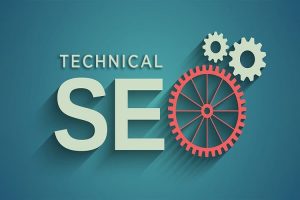Broken links are hyperlinks that no longer point to their intended destinations, leading users to error pages or “404 not found” messages. These links can negatively impact your website’s user experience and SEO performance by frustrating visitors and indicating to search engines that your site might not be well-maintained. Here, we’ll explore the common causes of broken links, how to fix them, and strategies to prevent their negative impact.

Common Causes of Broken Links
The first step in addressing broken links is identifying them. Tools like Semrush’s Site Audit and Google’s Search Console can help you scan your website for links which is broken. These tools crawl your site to find links that lead to error pages, helping you identify where the problems are.
Here are some typical reasons why links break:
- Site Reorganization: Redesigning or restructuring your website can lead to deleted pages or changes in URL structures.
- External Changes: Pages you’ve linked to on other websites might be moved or deleted without proper redirection.
- Typos: Simple mistakes in typing URLs can result in broken links.
How to Fix Broken Links
Once you’ve identified broken links, fixing them is usually straightforward. Here are a few methods:
- Redirect: Use a 301 redirect for pages that have been deleted or moved. This ensures users are directed to the correct page and helps maintain your site’s SEO by transferring the original page’s authority to the new URL.
- Update the Link: Regularly check and update URLs in your content, especially when external pages have moved. This prevents broken links from frustrating users and maintains the integrity of your external link profile.
- Remove the Link: If no suitable redirect or updated URL is available, it may be best to remove the broken link entirely. This helps keep your site clean and improves user experience. It also offers an opportunity to replace outdated content with newer, more relevant information.
Preventing the Negative Impact of Broken Links
Maintaining a healthy website is key to avoiding the issues caused by broken links. Here are some tactics:
- Perform Regular Audits: Schedule routine link checks to catch and fix issues early. Regular audits help ensure a seamless navigation experience for visitors and improve your site’s SEO, as search engines favor well-maintained websites. Depending on the size and nature of your site, consider conducting audits monthly or quarterly.
- Link to Reliable Sources: When linking to external sites, choose those with a reputation for stability and longevity. This reduces the likelihood of broken links and enhances your site’s credibility. Using authoritative sources also builds trust with your audience and improves your SEO.
- Use Link Monitoring Tools: Implement tools that continuously monitor your links and provide alerts when a link breaks. This allows you to quickly address issues, keeping your site accessible and efficient, and minimizing negative impacts on user experience and SEO. These tools can be a part of your overall web maintenance strategy to ensure ongoing operational excellence.
Understanding and managing the health of your website and its links is essential for maintaining user trust and enhancing the overall customer experience. Regularly checking for and promptly fixing links which are broken can significantly improve your site’s reliability and SEO performance.





